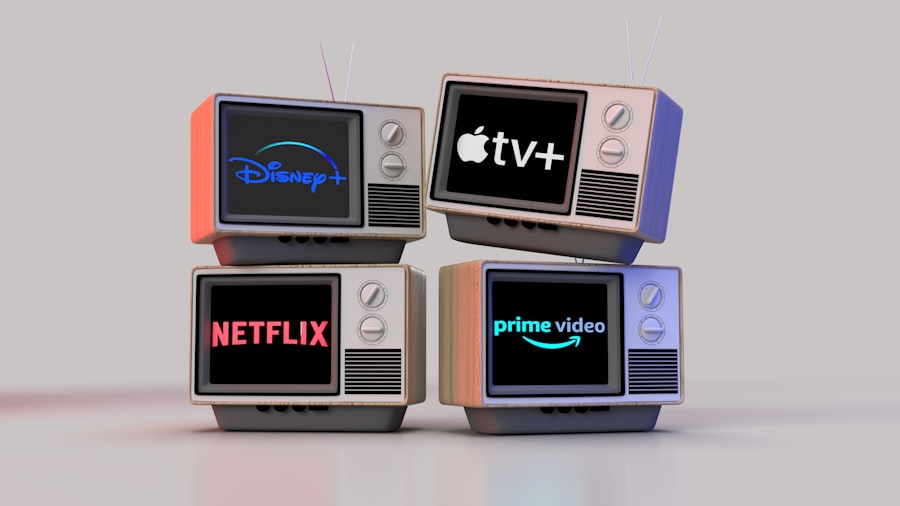Over-the-top (OTT) platforms are internet-based streaming services that provide video content directly to viewers, circumventing traditional cable and satellite television distribution methods. These platforms offer a diverse range of content, including movies, television shows, and original programming, accessible on various devices such as smart TVs, smartphones, tablets, and computers. The popularity of OTT platforms has surged in recent years due to their convenience, flexibility, and extensive content libraries.
OTT platforms utilize streaming technology to deliver audio and video content over the internet. When a user selects a video, the content is transmitted in real-time through a process called streaming, which allows viewers to watch without downloading the entire file. These platforms employ adaptive streaming technology to adjust video quality based on the user’s internet connection speed, ensuring a seamless viewing experience.
OTT services typically offer subscription-based models, where users pay a recurring fee for access to a content library without advertisements. Some platforms also provide free, ad-supported content options. Additionally, transactional video on demand (TVOD) or electronic sell-through (EST) services may be available, allowing users to rent or purchase individual titles.
OTT platforms have transformed video content consumption, offering a more personalized and on-demand viewing experience compared to traditional television services.
Key Takeaways
- OTT platforms are streaming services that deliver video content over the internet, bypassing traditional cable or satellite providers.
- When choosing the right OTT platform for your video content, consider factors such as target audience, content type, and monetization options.
- Creating engaging and high-quality video content for OTT platforms involves understanding your audience, storytelling, and production value.
- Leveraging data and analytics can help optimize video content distribution by understanding viewer behavior and preferences.
- Monetizing your video content on OTT platforms can be done through subscription models, advertising, or pay-per-view options.
Choosing the Right OTT Platform for Your Video Content
Understanding Your Target Audience
The first step is to identify your target audience and determine which OTT platforms they are most likely to use. Different platforms cater to different demographics and interests, making it crucial to align your content with the platform that best suits your audience.
Evaluating Platform Reach and Content Offerings
Another vital consideration is the platform’s reach and visibility. Some OTT platforms have a larger user base and better brand recognition, making it easier for your content to reach a wider audience. Additionally, you should evaluate the platform’s content offerings and genre focus to ensure that your content aligns with the platform’s overall theme and audience preferences.
Assessing Monetization Options and Technical Capabilities
Furthermore, it’s essential to consider the platform’s monetization options and revenue-sharing models. Some platforms offer better revenue-sharing terms or more flexible pricing options, which can significantly impact your bottom line. You should also assess the platform’s technical capabilities and features, such as video quality, streaming reliability, and device compatibility, to ensure that your content will be presented in the best possible light.
By carefully considering these factors, you can choose the OTT platform that best aligns with your content and business goals, ultimately maximizing your content’s visibility and revenue potential.
Creating Engaging and High-Quality Video Content for OTT Platforms

Creating engaging and high-quality video content is essential for success on OTT platforms. With an abundance of content available to viewers, it’s crucial to produce videos that captivate and resonate with your audience. To achieve this, you should focus on storytelling, production quality, and audience engagement.
First and foremost, storytelling is at the heart of compelling video content. Whether you’re creating a short film, a documentary, or a series, a strong narrative can draw viewers in and keep them invested in your content. Consider developing characters, plotlines, and themes that resonate with your target audience and evoke emotional responses.
By crafting a compelling story, you can create a deeper connection with your viewers and keep them coming back for more. In addition to storytelling, production quality plays a significant role in capturing viewers’ attention. High-quality visuals, sound design, and editing can elevate your content and make it more visually appealing.
Investing in professional equipment, talented crew members, and post-production resources can help you create polished and professional-looking videos that stand out on OTT platforms. Furthermore, audience engagement is crucial for building a loyal fan base and driving viewership. Encourage interaction with your content by incorporating interactive elements such as polls, quizzes, or behind-the-scenes footage.
Additionally, leverage social media and community-building strategies to foster a sense of belonging among your audience. By creating opportunities for engagement, you can cultivate a dedicated following that actively supports and promotes your content. In conclusion, creating engaging and high-quality video content for OTT platforms requires a focus on storytelling, production quality, and audience engagement.
By prioritizing these elements in your content creation process, you can attract and retain viewers while differentiating your content from the competition.
Leveraging Data and Analytics to Optimize Video Content Distribution
Leveraging data and analytics is essential for optimizing video content distribution on OTT platforms. By analyzing viewer behavior, engagement metrics, and performance data, you can gain valuable insights that inform your content strategy and distribution efforts. From audience segmentation to content performance tracking, data-driven decision-making can help you maximize the impact of your video content.
One key area where data can be leveraged is audience segmentation. By analyzing demographic information, viewing habits, and engagement patterns, you can identify distinct audience segments with unique preferences and behaviors. This allows you to tailor your content distribution strategy to specific audience segments, ensuring that your videos resonate with the right viewers at the right time.
Additionally, performance tracking and analytics provide valuable feedback on how your content is performing on OTT platforms. Metrics such as watch time, completion rate, and viewer retention can help you understand which videos are resonating with your audience and which ones may need improvement. By identifying trends and patterns in performance data, you can make informed decisions about content optimization and distribution strategies.
Furthermore, data-driven insights can inform your promotional efforts and distribution tactics. By understanding where your audience is most active and receptive to your content, you can optimize your marketing campaigns and distribution channels for maximum impact. Whether it’s through targeted advertising or strategic partnerships with other content creators or platforms, leveraging data can help you reach new audiences and expand your content’s visibility.
In summary, leveraging data and analytics is crucial for optimizing video content distribution on OTT platforms. By harnessing the power of data-driven insights, you can refine your content strategy, tailor distribution efforts to specific audience segments, and maximize the impact of your video content.
Monetizing Your Video Content on OTT Platforms
Monetizing your video content on OTT platforms is a key consideration for content creators looking to generate revenue from their videos. There are several monetization options available on OTT platforms, each with its own benefits and considerations. From subscription-based models to advertising opportunities, understanding the various monetization strategies can help you make informed decisions about how to generate income from your video content.
One common monetization model on OTT platforms is subscription-based access. This model allows users to pay a recurring fee to access a library of content without any advertisements. By offering exclusive or premium content behind a paywall, you can generate steady revenue from loyal subscribers who value your content enough to pay for it.
Additionally, subscription-based models provide predictable income streams that can support ongoing content creation efforts. Another monetization option is advertising-supported content. In this model, users can access videos for free but are shown advertisements during playback.
Content creators can earn revenue based on ad impressions or clicks generated by their videos. While advertising-supported models may offer broader reach and accessibility for viewers, they also require careful consideration of ad placement and frequency to ensure a positive viewing experience. Additionally, transactional video on demand (TVOD) or electronic sell-through (EST) options allow users to rent or purchase individual titles on an à la carte basis.
This model is well-suited for one-time or premium content offerings that may not fit within a subscription-based framework. By offering TVOD or EST options for specific videos or events, you can capture revenue from users who are willing to pay for unique or time-sensitive content. In conclusion, monetizing your video content on OTT platforms requires careful consideration of subscription-based models, advertising-supported options, and transactional video on demand offerings.
By understanding the various monetization strategies available, you can make informed decisions about how to generate income from your video content while providing value to your audience.
Maximizing Reach and Engagement through Social Media and OTT Platforms

Creating Compelling Teaser Clips
One effective strategy for maximizing reach and engagement through social media is to create compelling teaser clips or trailers for your video content. By sharing short previews of your videos on social media platforms such as Facebook, Instagram, or Twitter, you can pique viewers’ interest and entice them to watch the full videos on OTT platforms. Teaser clips can be accompanied by engaging captions or calls-to-action that encourage viewers to click through to the full video.
Engaging Directly with Your Audience
Additionally, social media provides an opportunity to engage directly with your audience through comments, messages, and live interactions. By fostering two-way communication with your followers, you can build a sense of community around your content and cultivate loyal fans who actively support and promote your videos. Responding to comments, hosting Q&A sessions, or sharing behind-the-scenes glimpses of your creative process can help humanize your brand and deepen connections with viewers.
Leveraging Social Media Advertising
Furthermore, social media advertising offers targeted promotion opportunities that can help amplify the reach of your video content. By leveraging advanced targeting options on platforms such as Facebook Ads or Instagram Ads, you can reach specific demographics or interest groups that are likely to be interested in your videos. Paid social media campaigns can complement organic promotion efforts and drive traffic to your videos on OTT platforms.
In summary, maximizing reach and engagement through social media is crucial for driving viewership of your video content on OTT platforms. By creating compelling teaser clips, engaging directly with your audience, and leveraging social media advertising opportunities, you can expand your audience reach and foster meaningful connections with viewers.
The Future of OTT Platforms and Video Content Distribution: Trends and Predictions
The future of OTT platforms and video content distribution is poised for continued growth and innovation as technology evolves and consumer behaviors shift. Several trends and predictions are shaping the landscape of OTT platforms and video distribution in the coming years. One prominent trend is the rise of original content production by OTT platforms.
As competition intensifies among streaming services, original programming has become a key differentiator for attracting subscribers and retaining viewers. We can expect to see increased investment in original series, films, documentaries, and other exclusive content by OTT platforms seeking to establish their unique value proposition in a crowded market. Another trend is the convergence of traditional television and OTT platforms through hybrid distribution models.
As more consumers embrace streaming services while maintaining some level of traditional TV viewing habits, we may see hybrid models emerge that offer seamless integration between linear TV channels and on-demand streaming libraries. This convergence could provide new opportunities for content creators to reach diverse audiences across multiple distribution channels. Furthermore, advancements in technology such as 5G connectivity, augmented reality (AR), virtual reality (VR), and interactive experiences are expected to shape the future of video content distribution on OTT platforms.
These technologies have the potential to enhance the viewing experience by enabling higher-quality streaming, immersive storytelling formats, and interactive elements that engage viewers in new ways. In conclusion, the future of OTT platforms and video content distribution is marked by trends such as original content production, hybrid distribution models, and technological advancements that will continue to shape the industry in the years ahead. As consumer preferences evolve and technology continues to advance, we can expect ongoing innovation in how video content is created, distributed, and consumed on OTT platforms.
If you’re interested in the latest developments in technology, you might want to check out the article on Alphabet-owned Boston Dynamics and their new creation, the nightmare-inducing robot. This article discusses the latest innovation from the tech giant and how it could potentially impact various industries. It’s a fascinating read for anyone interested in cutting-edge technology. https://savvymatthew.com/alphabet-owned-boston-dynamics-shows-us-their-new-creation-the-nightmare-inducing-robot/
FAQs
What are OTT platforms?
OTT (Over-the-Top) platforms are streaming services that deliver video content over the internet, bypassing traditional cable and satellite television providers.
How do OTT platforms work?
OTT platforms work by providing access to video content through internet-connected devices such as smart TVs, streaming media players, smartphones, and tablets. Users can subscribe to these services and stream content on-demand.
What are the benefits of leveraging OTT platforms for video content distribution?
Leveraging OTT platforms for video content distribution allows content creators and distributors to reach a global audience, access valuable viewer data for targeted marketing, and provide a more personalized viewing experience for users.
What types of content can be distributed through OTT platforms?
OTT platforms can distribute a wide range of content, including movies, TV shows, live sports events, news broadcasts, and original programming produced by the platform itself.
What are some popular OTT platforms?
Popular OTT platforms include Netflix, Amazon Prime Video, Hulu, Disney+, HBO Max, and Apple TV+. There are also niche OTT platforms that cater to specific genres or interests.
How can businesses leverage OTT platforms for video content distribution?
Businesses can leverage OTT platforms by creating and distributing branded content, partnering with existing OTT platforms for advertising or sponsorship opportunities, and utilizing data analytics to optimize content delivery and audience engagement.




